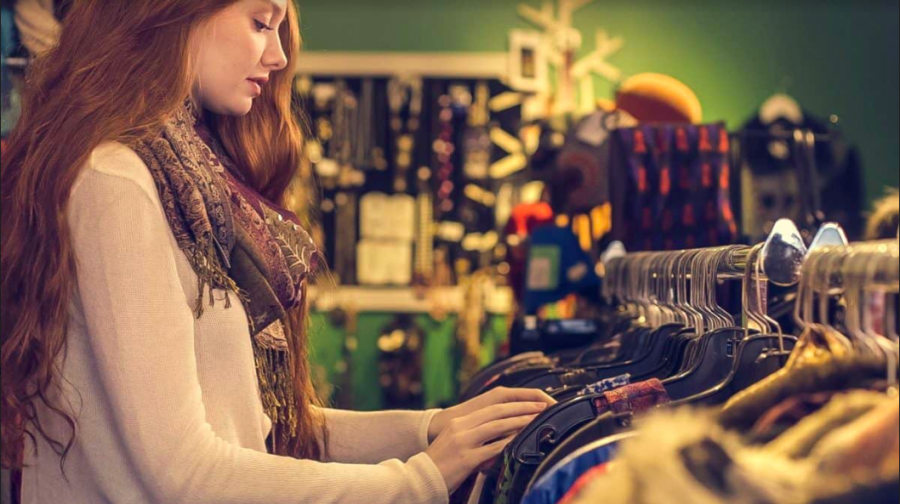As the St. John’s University Fashion Program grows, so does the opportunity for students and faculty to get involved in the industry. On Tuesday Oct. 15, speaker Sean O’Connor from WGSN, World Global Style Network, came to speak with faculty on WGSN trend reports and how SJU can access these.
WGSN was established in 1998 and is the core site for all things trending. They are based in New York and London, and have main hubs in several different cities ranging from Paris, Barcelona, Melbourne, Tokyo and Seoul. With partners such as Coach, Adidas, Levi’s, Starbucks, Netflix, FILA, Puma and Disney, WGSN is a powerhouse of fashion knowledge.
From colors to fashion and lifestyle to beauty, they report what most people are wearing, using and buying. These reports are most helpful to companies launching new products and looking to see what is trending, and also to fashion designers, students, influencers, or really anyone who wants to know what materials the world is gravitating towards.
O’Connor spoke about how years back it took a long time for trends to catch on, but today with social media, every trend is shared instantaneously. The four main areas of WGSN’s research are: Insight, Fashion, Lifestyle and Interior and Beauty. Insight is all about the consumer research. “Trends begin from how people live their lives,” O’Connor said. “About 70 percent of Gen Z consumers will stop shopping at a company if it is not sustainable. Many people believe sustainability is trending, but it is in fact a way of life.” Many of the millenials began the push for sustainability and Gen Z is continuing the cycle. O’Connor spoke about the baby boomers and how they want sustainability, but some may not understand it fully and be less inclined to buy products based around it.
Fashion is a giant sector of WGSN. They will send employees out to cover fashion shows, festivals and events. Artificial Intelligence sources also pull trends from social media. Afterwards, all of the photos are uploaded into folders based on designers, colors and styles and then broken down into what is trending. The study showed that this year there was a 10 percent increase in dresses on the runway this year, O’Connor noted.
One of the social media trends O’Connor mentioned was the rise of avatar influencers. Robots that look very realistic to human beings post just as any fashion style blogger or instagrammer would. An example of one of these influencers is @lilmiquela on Instagram.
Coachella is a big hub for spotting trends. WGSN sends employees to report on outfits seen at Coachella and will release those reports to companies such as Urban Outfitters. It is important for them to see the trends to know what products to create, market and sell.
Fashion is the main topic of WGSN’s reporting, but it is not limited to it. Lifestyle and home has an entire section called “Home Hub” which consists of all sorts of products for everyday life and comfort. “We live in an anxious world that consistently seeks comfort. The home is for self-care, wellness and self-improvement,” O’Connor said. He added that many millenials work from home now and are purchasing things like heated rugs. “They provide comfort as well as a sustainable way to heat the space,” he said.
SJU students have access to both the Fashion reports and the Insight (consumer research) when they make a personal account with their SJU email on campus wifi. These reports have the ability to open many doors for those who want to educate themselves further on the industry.
Professor Richard Bigger, SJU’s fashion design and fashion film professor, has ample experience with WGSN and has used it for his work at Calvin Klein and Ralph Lauren. He advocates for his students to explore the creative process and use all the resources they can, WGSN included. He took his fashion design class on a trip to WGSN where he spoke about using the trend forecasts at Calvin Klein where they would assess and execute based off the research done at WGSN.
“It was interesting to learn that trends tie into consumer behavior and the extensive research that goes into trend forecasting,” Camila Quiroga, Fashion Studies major, said. “It affects our everyday lives.”
In terms of fashion today, it is ever evolving and trends are constantly emerging. Fashion has always been a field of expression and experimenting with different styles or trends.
Since WGSN focuses on the future, they are always two years ahead of trends, meaning students can expect to see these trends hit SJU very soon. For color trends and forecasts, Spring/Summer 2021 is predicting Aqua, Oxy Fire Red, Lemon Sherbert and Neo Mint. 2021 is also looking like a promising rise of style shifting in the age of inclusivity.
“About 30 percent of Gen Z know people who use non gender based terms,” O’Connor said. “We are seeing a rise of genderless pastels in 2021 [with the rise of fashion inclusivity].” Fashion has already started to be more fluid, but it is predicted that non gender specific clothing will grow and evolve.
Trends dictate the way companies operate and how people live. In this fast-paced society of instant sharing on social media, trends are constantly coming and going. WGSN is a useful resource for college students studying fashion, especially those at SJU who live and study in one of the most fashionable cities in the world, to stay on top of these ever-changing trends as they build their careers in fashion.








